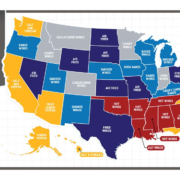Your Beginner’s Guide to Technical Restaurant SEO
In the ever-evolving landscape of digital marketing, restaurant owners are realizing the importance of a robust online presence to stay competitive. One crucial ingredient in the recipe for online success is mastering Technical Restaurant SEO.
Contact me now at the webform below so we can talk strategy about digital marketing services, or keep reading to learn more about how you can reach more customers online with restaurant digital marketing.
This Technical Restaurant SEO guide will explore the key elements, including Schema and Microformatting, and how they can elevate your restaurant’s visibility in the digital realm.
Schema and Microformatting: The Cornerstones of Restaurant SEO
Before we dive into the technicalities, let’s demystify Schema and Microformatting. Think of them as the building blocks that help search engines understand and organize your restaurant’s information. Schema is a markup vocabulary, and Microformatting is the technique that structures data, collectively ensuring that search engines can efficiently process and display your restaurant’s details in search results.
Schema’s Effects for Restaurant SEO: Boosting Visibility and Relevance
Implementing Schema for your restaurant’s website can be a game-changer. It provides search engines with a clearer understanding of your content, leading to improved visibility and relevance in search results. From highlighting your business hours to showcasing reviews and ratings, Schema helps present a comprehensive snapshot of your restaurant directly on the search engine results page (SERP), enticing potential customers to choose your establishment.
How Google is Finding and Verifying Restaurant SEO Data: Behind the Scenes
Ever wondered how Google collects and verifies restaurant SEO data? Understanding this process is crucial for optimizing your online presence. Google utilizes various sources, including your website, authoritative directories, and user-generated content, to compile accurate and up-to-date information about your restaurant. By ensuring consistency across these platforms, you enhance your restaurant’s credibility in the eyes of search engines.
The Case for Menu Schema: Whetting the Appetite of Search Engines
For restaurant owners, the menu is a crucial aspect of attracting customers. Menu Schema takes this a step further by providing a structured format for your menu items, prices, and descriptions. This not only makes it easier for search engines to comprehend your offerings but also enhances the likelihood of your restaurant appearing in specialized search results, such as “best Italian restaurants near me” or “restaurants with vegan options.”
How to Implement Menu Microformatting: A Step-by-Step Guide
Now that we understand the importance of Menu Schema, let’s explore the practical side of implementation. Menu Microformatting involves embedding specific code on your website to convey the details of your menu in a language that search engines understand. This step-by-step guide will walk you through the process, ensuring that your menu stands out in search results.
Step 1: Choose the Right Microformat
Before you start, decide which microformat you want to use for your menu. Commonly, restaurants opt for the Microdata format, which is supported by major search engines like Google. Microdata uses HTML tags to define specific types of data, making it easy for search engines to understand the content.
Step 2: Identify Key Menu Elements
Examine your menu and identify key elements such as dishes, prices, descriptions, and categories. Creating a structured plan beforehand will make it easier to implement microformatting consistently across your entire menu.
Step 3: Integrate Microdata Markup
Now, let’s integrate microdata markup into your HTML code. For each menu item, use the appropriate HTML tags to wrap relevant information. Here’s a basic example for a menu item:
<div itemscope itemtype=”http://schema.org/MenuItem”>
<span itemprop=”name”>Grilled Salmon</span>
<span itemprop=”description”>Freshly caught salmon, grilled to perfection.</span>
<span itemprop=”price”>$19.99</span>
</div>
Repeat this structure for each item on your menu, ensuring that you accurately represent the name, description, and price for each dish.
Step 4: Include Menu Sections
If your menu is organized into sections (appetizers, main courses, desserts), use the MenuSection type to further structure your data. Here’s an example:
<div itemscope itemtype=”http://schema.org/MenuSection”>
<h2 itemprop=”name”>Appetizers</h2>
<!– Include individual menu items within this section –>
</div>
Step 5: Add Restaurant Information
Include your restaurant’s basic information using the Restaurant type. This helps search engines understand the context and associate the menu items with your establishment.
<h1 itemprop=”name”>Your Restaurant Name</h1>
<div itemprop=”address” itemscope itemtype=”http://schema.org/PostalAddress”>
<span itemprop=”streetAddress”>123 Main St</span>,
<span itemprop=”addressLocality”>City</span>,
<span itemprop=”addressRegion”>State</span>
<span itemprop=”postalCode”>12345</span>
</div>
</div>
Step 6: Test Your Markup
To ensure your microformatting is correct, use Google’s Structured Data Testing Tool. Paste your website’s URL or HTML code into the tool, and it will verify the markup and provide feedback on any errors or warnings.
Step 7: Monitor and Update
Keep a close eye on your website’s performance in search engine results. Regularly update your menu microformatting as your menu changes or as you introduce new dishes. Staying current ensures that search engines accurately reflect your offerings to potential customers.
Future Outlook and Usages: Staying Ahead of the Curve
As technology continues to advance, so does the landscape of SEO. Explore the future outlook of technical restaurant SEO, including emerging trends and potential usages that can further amplify your restaurant’s online presence. Stay ahead of the curve by being proactive and adapting to the evolving SEO landscape.
In the digital age, mastering technical restaurant SEO is not just an option — it’s a necessity for staying relevant and competitive. By embracing Schema and Microformatting, understanding how Google verifies restaurant SEO data, and strategically implementing Menu Schema, you’re laying a solid foundation for online success. As you embark on this SEO journey, remember that staying informed about future trends and utilizing related resources will keep your restaurant at the forefront of the digital dining experience. Cheers to a thriving online presence!









